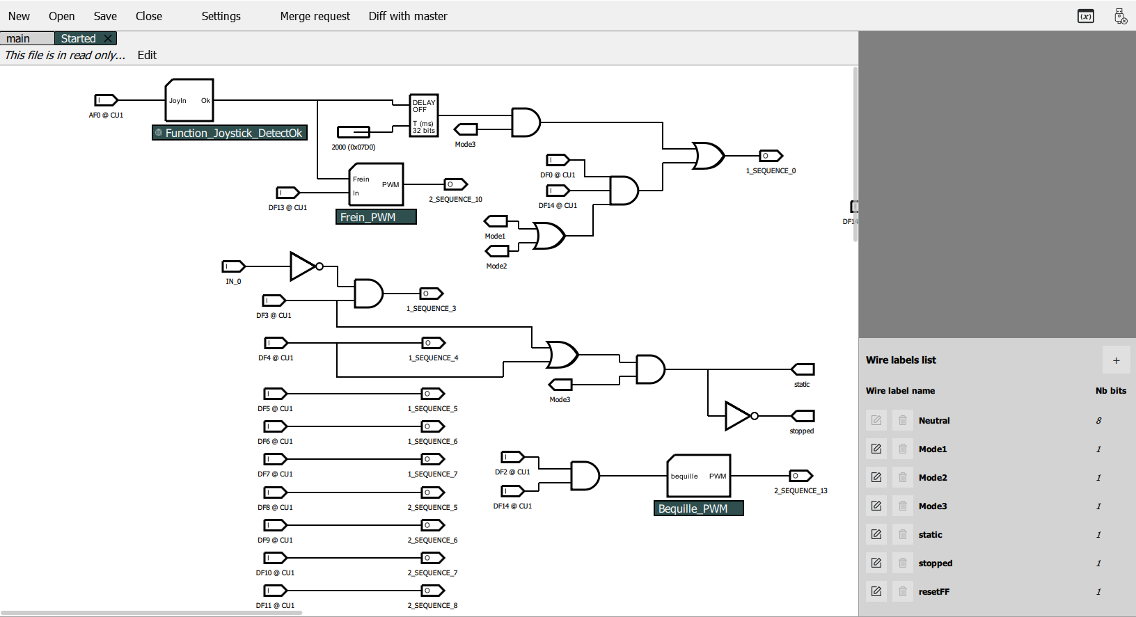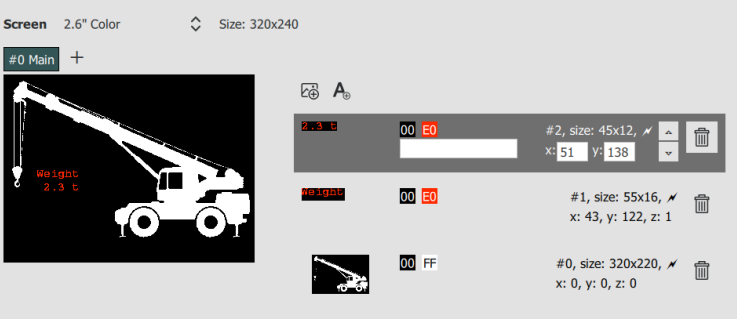E-Drop
Graphical programming software that allows you to configure your safety remote control without deep programming knowledge

E-Drop is a software which allows users to easily customs applications without the need for programming knowledge. The simple graphical interface and the "Live mode" make it accessible to a wide range of individuals.
E-Drop's main goal is to separate the responsibilities of research and development (R&D) teams and application engineers. R&D teams can focus on developing new features, such as new hardware and protocols, while application designers can focus on tailoring the product to specific customer needs.
E-Drop allows anyone to customize the application, eliminating the need for an electrical engineer. Users can create custom logic for the application, such as allowing movement when a button is pressed, and customize pictograms for a more personalized experience. The software allows easy upgrades with 1 clic management, making it easy to change versions as needed and per project.
In terms of architecture, E-Drop is built on a modular structure, the user update only tle last layer of the applicaton, the embedded library is safe ad under control. The software also includes a variety of features, such as drag-and-drop functionality and the ability to preview changes in real time, which makes the development process more efficient.
In summary, E-Drop is a user-friendly tool that simplifies the custom application development process, allowing individuals with little or no programming knowledge to create their own unique applications. It streamlines the application development process and enables more effective collaboration between R&D teams and application engineers.
Features List
E-Drop is still evolving, but here is a list of available features in v1.9.18:
-
Add hardware "slaves" according to the needs of the application
-
Native integration of a versioning software
-
One-click update: flash all or obsolete embedded hardware
-
Drag and drop editing
-
"Subgate" / "Subprocess"
-
Flash page: allow production users not to open a project to flash a project
-
Request for merge / differential with the master (graphical)
-
Live on USB: debug your application
-
Manage Gate and Embedded library versions
-
Copy from an already working project
-
User restriction
-
Variables (dynamic data on EEPROM)
-
Automatic project lock/unlock mechanism
-
Import of graphic pictograms for screen programmation
-
Screen Builder (under development alpha 1.10.33)
-
Automatically store system information (hardware and software version) in E-Chronos database
Screen Builder
The "Screen Buidler" feature of E-Drop allows you to control the display on the transmitter. At E-Chronos, there are two ways to build the screen layout.
The first one is to send CAN frames containing complete widgets (Color, X,Y position, Size, data payload) from a machine's onboard computer (PLC) to theindustrial radio control. Indeed it allows you to build the layout of the screen completely from canOPEN command. This is advantageous because if you want to make updates of the screen layout, you don't need to update the remote control itself, only your machine. However, to display a complete screen a bit more time is needed, overall it takes about five to ten frames to display a complete screen.
The second way is to store the layout information in the E-Chronos remote control. If you want to update the screen layout, you have to open the remote control and connect a USB. This method is faster at runtime because you only need to send a data stream and one frame is enough to display the complete screen.
In case you dont have a PLC on your machine, with this method, it is still possible to interace with sensor connected on the receiver and displays the analog or digital inputs. E-Drop will create the data stream for you.
In short, the first method is more flexible but takes more time to display while the second is faster but less flexible. Don't forget, if you are using the remote system for more than 1 application, you could add all pictogram in 1 software and only have 1 device across your complet range of products.
Bascally, if you have an onboard computer on your machine, Yannick will push you/your developer to use the first solution. It is true that it takes a little bit more time to display the initial layout but keep in mind that software versioning can turn into a headache over a long machine life. And we are in a fast moving world and your machine will undoubtedly have several important updates.
Finally, these advantages/disadvantages will be reduced with the upcoming arrival of 2.4GHz. Its transmission speed will make it seem like a snap, and with Bluetooth, it will be possible to update the remote control without opening the device.
Contact us for more information.

Visual screen programming - Screen Builder.